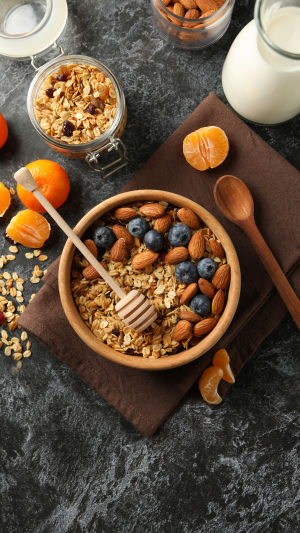Oatmeal is a staple grain consumed globally. Its nutritional profile and myriad health benefits make it an excellent addition to any diet.
However, despite its numerous advantages, oatmeal remains underutilized and underappreciated in many dietary cultures.
<h3>Nutritional Value of Oatmeal</h3>
Oatmeal is a powerhouse of nutrients that are essential for human health. It is a whole-grain food rich in dietary fibre, especially beta-glucan, a soluble fibre known for its cholesterol-lowering properties. Beta-glucan forms a gel-like substance in the intestines, which helps slow down the passage of food through the digestive tract, thus prolonging the feeling of fullness.
Oatmeal is also a significant source of plant protein, providing about 13 grams of protein per 100 grams. This makes oatmeal an excellent choice for vegetarians and those seeking alternative protein sources.
Additionally, oatmeal is packed with vitamins and minerals, including vitamins, vitamin E, magnesium, iron, and zinc. These nutrients are vital for maintaining normal metabolism, immune function, and cell repair in the human body.
<h3>Health Benefits of Oatmeal</h3>
<b>1. Heart Health</b>
The beta-glucan fibre in oatmeal plays a crucial role in reducing low-density lipoprotein (LDL) cholesterol, often referred to as "bad" cholesterol. Regular consumption of oatmeal has been shown to significantly lower the risk of heart disease.
Furthermore, the antioxidants in oatmeal, such as vitamin E and unique phenolic compounds like ferulic acid, contribute to cardiovascular health by protecting the heart and blood vessels from damage.
<b>2. High Satiety</b>
Oatmeal is highly effective in increasing satiety, which can aid in weight management. Being a whole grain, oatmeal can be incorporated into various meals throughout the day, whether hot or cold, sweet or savoury. Pairing Oatmeal with other nutrient-dense foods such as fruits, vegetables, dairy products, and protein sources can enhance the overall quality of your diet.
<b>3. Digestive Health</b>
Dietary fibre in oatmeal is essential for maintaining a healthy digestive system. Soluble fibre helps soften stools and promote bowel movements, preventing constipation.
Insoluble fibre increases the volume of stool, making it easier for it to move smoothly through the digestive tract. Additionally, oatmeal acts as a prebiotic, fostering the growth of beneficial gut bacteria and thereby improving overall gut health.
<h3>Applications of Oatmeal in Modern Diets</h3>
Despite the extensive health benefits of oatmeal, they remain underutilized in many culinary traditions. However, with the rising trend of healthy eating, oatmeal has gained popularity as a superfood.
<b>1. Breakfast Options</b>
The most common way to consume oatmeal is as breakfast porridge. Simple oatmeal porridge can be enhanced with a variety of fruits and nuts to increase flavour and nutritional value.
Cold-brewed oatmeal, or overnight oatmeal, has become a convenient choice for busy mornings. Mixing oatmeal with milk or plant-based milk the night before results in a ready-to-eat breakfast the next day.
<b>2. Baking and Snacks</b>
Oatmeal is versatile in baking, commonly used in oatmeal cookies, bread, and cakes. These baked goods are not only delicious but also healthier alternatives to traditional desserts, providing a good source of energy and nutrients.
<b>3. Meal Replacements and Snacks</b>
With the increasing demand for healthy snacks, meal replacement products like oatmeal and energy balls have become popular. These products are portable and offer sustained energy, making them ideal for busy workdays or on-the-go consumption.
Oatmeal is a versatile, nutritious, and health-promoting grain that deserves greater recognition and inclusion in our diets. Its benefits for heart health, high satiety, and digestive health make it a valuable addition to any meal.
As the trend towards healthy eating continues to grow, oatmeal is poised to become a staple in kitchens worldwide. Let's embrace this humble superfood and explore the many ways it can enhance our health and culinary experiences.





